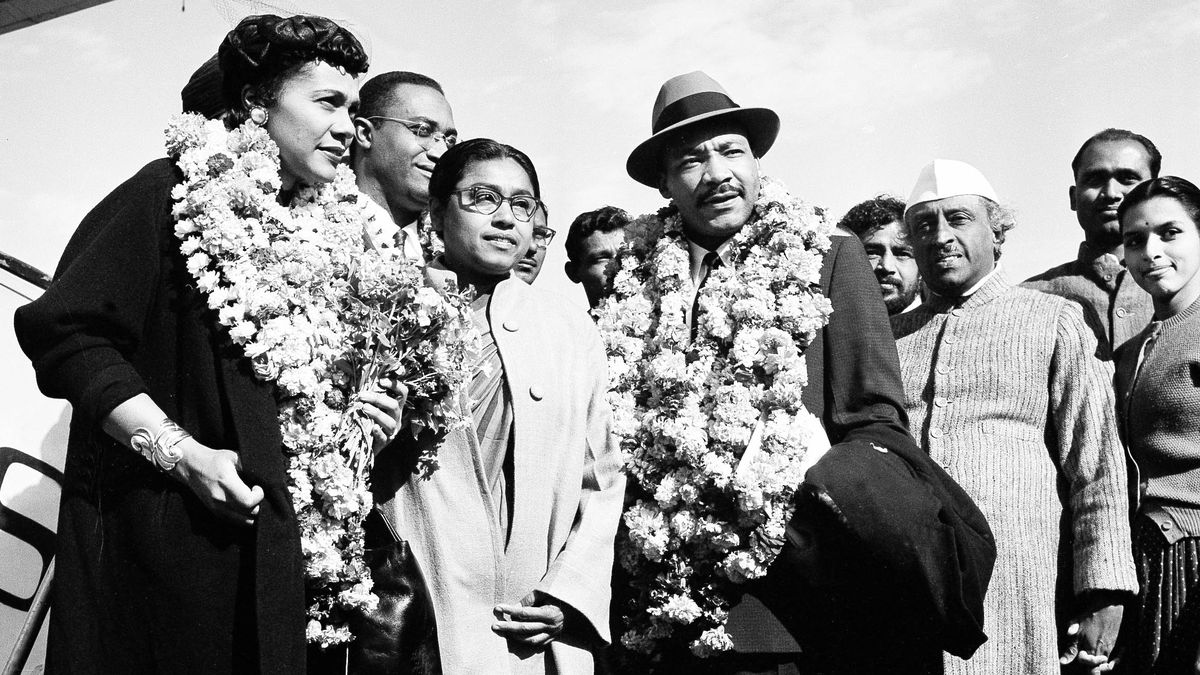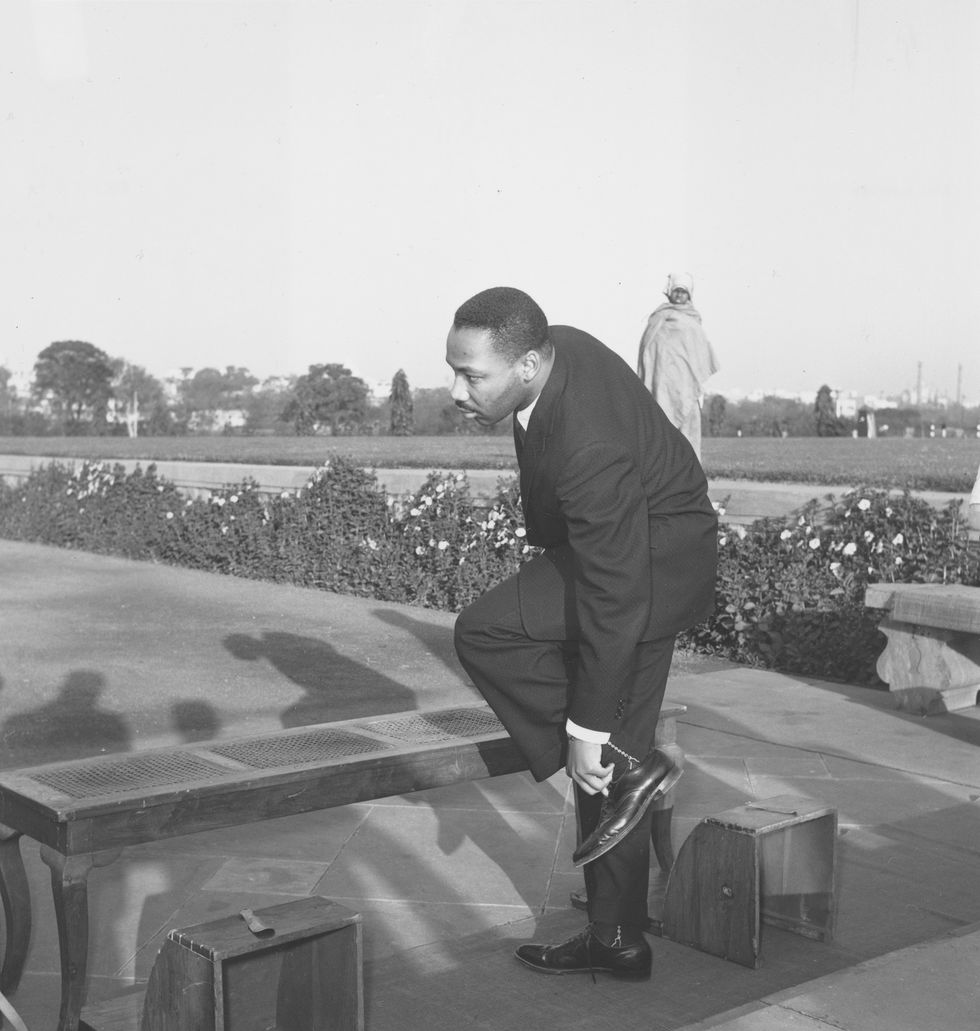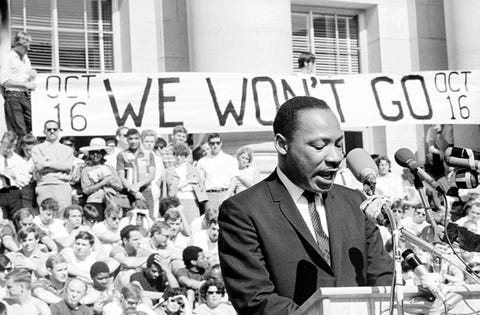You are viewing the article How Martin Luther King Jr. Took Inspiration From Gandhi on Nonviolence at Lassho.edu.vn you can quickly access the necessary information in the table of contents of the article below.

Mahatma Gandhi inspired people all over the world, including one of the United States’ most famous civil rights leaders, Martin Luther King Jr.
Though the two men never got a chance to meet (King was 19 when Gandhi was assassinated), King learned about Gandhi through his writing and a trip to India in 1959. King drew heavily on Gandhian principle of nonviolence in his own civil rights activism, writing that “while the Montgomery boycott was going on, India’s Gandhi was the guiding light of our technique of nonviolent social change.”
“Nonviolence” is a more than simply agreeing that you won’t physically attack your enemy. Gandhi referred to his form of nonviolence as satyagraha, meaning “truth-force” or “love-force.” Practicing satyagraha means a person should seek truth and love while refusing, through nonviolent resistance, to participate in something she believes is wrong. This principle guided Gandhi’s activism against the British Empire, helping India win independence in 1947.
King connected Christianity to Gandhi’s teachings
King first learned of Gandhi’s concept of nonviolenceas a seminary student. As a Christian, he connected the Hindu thinker’s words to the Biblical appeal of Jesus to “love your enemies and pray for those who persecute you.”
“I came to see for the first time that the Christian doctrine of love operating through the Gandhian method of nonviolence was one of the most potent weapons available to oppressed people in their struggle for freedom,” King later wrote.
King was already familiar with peaceful civil disobedience through American writers like Henry David Thoreau, and he liked Gandhi’s idea that oppressed people could use truth or love as weapons in their struggle for justice. But he didn’t find a practical application for how to put it to use until he became involved in the Montgomery bus boycott of 1955 and ‘56.
In his 1958 bookStride Toward Freedom: The Montgomery Story, King laid out the principles of nonviolence he’d employed during the boycott. He affirmed that it is possible to resist evil without resorting to violence and to oppose evil itself without opposing the people committing evil. He also wrote that people who practice nonviolence must be willing to suffer without retaliation, internal or external: “The nonviolent resister not only refuses to shoot his opponent but he also refuses to hate him.”
“He saw [nonviolence] as an expression of love for all people,” says Clayborne Carson, a history professor and director of the Martin Luther King Jr. Research and Education Institute at Stanford University. “It’s a way of reaching people and convincing them of the rightness of your cause.”
Shortly after the Supreme Court ruled that Montgomery’s bus segregation was unconstitutional, King told a crowd in Brooklyn: “Christ showed us the way, and Gandhi in India showed it could work.”
King wasn’t the only civil rights leader who looked to Gandhi for inspiration. In the late 1950s, future congressman John Lewis studied Gandhi in nonviolence workshops led by activist James Lawson. These workshops prepared Lewis for the sit-ins he and other students would later hold at lunch counters in Nashville, Tennessee.
“[I]f you can understand and feel even in the midst of those critical and often physically painful moments that your attacker is as much a victim as you are, that he is a victim of the forces that have shaped and fed his anger and fury, then you are well on your way to the nonviolent life,” Lewis wrote in his book Walking with the Wind: A Memoir of the Movement.
He saw the legacy of Gandhi’s leadership in India
To better understand Gandhian principles, King took a one-month trip to India at the beginning of 1959. There, he was pleasantly surprised to find that many people there had followed the nonviolent bus boycott he’d been a part of.
During the trip, he met with Gandhi’s son, cousin, grandsons and other relatives and laid a wreath on his entombed ashes. And he left even more convinced of the power of nonviolent civil disobedience to affect social change.
“It was a marvelous thing to see the amazing results of a nonviolent campaign,” King wrote in Ebony after his trip. “The aftermath of hatred and bitterness that usually follows a violent campaign was found nowhere in India. Today a mutual friendship based on complete equality exists between the Indian and British people within the commonwealth.”
“I would say that after he returned he was the most prominent living advocate for nonviolence,” Carson says. “He popularized a lot of the ideas that Gandhi had, but through King, they spread throughout the United States and, of course, came to other parts of the world.”
Thank you for reading this post How Martin Luther King Jr. Took Inspiration From Gandhi on Nonviolence at Lassho.edu.vn You can comment, see more related articles below and hope to help you with interesting information.
Related Search:

